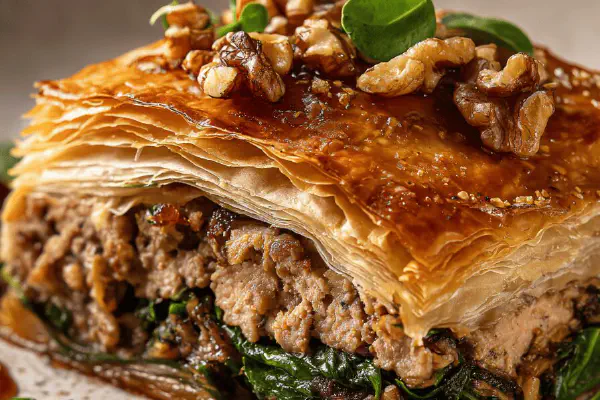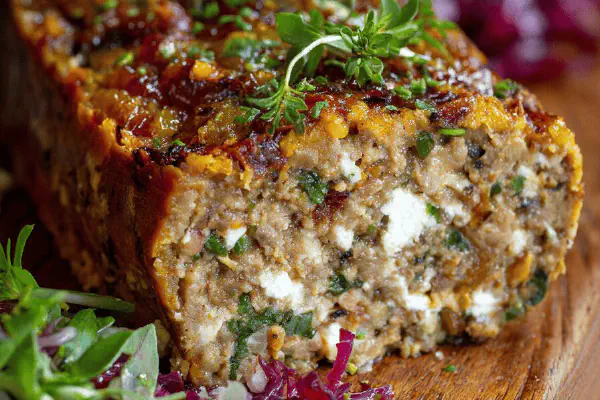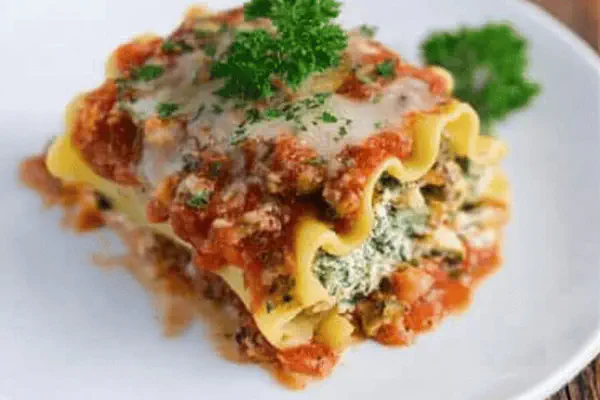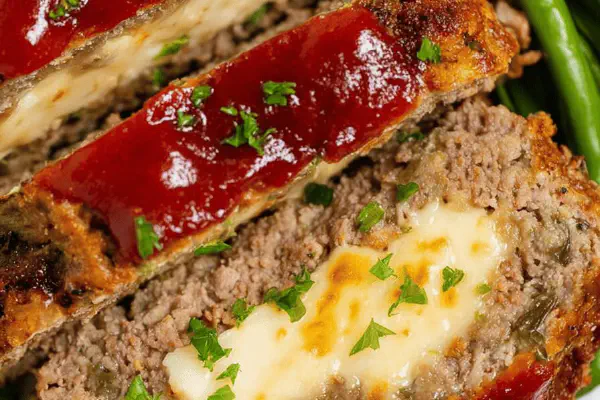Savory Meat Puff Pastry

By Emma
Certified Culinary Professional
Ingredients
- 1 medium shallot, minced
- 30 ml extra virgin olive oil
- 450 g (1 lb) ground pork shoulder
- 60 ml dry white vermouth
- 250 ml rich chicken stock
- 125 ml crushed soft bread crumbs
- 3 cloves garlic, minced
- 500 ml fresh baby spinach, roughly chopped
- 125 ml toasted chopped walnuts
- 1 egg yolk
- 15 ml cold water
- 450 g store-bought frozen puff pastry, thawed
- Salt and freshly ground black pepper
About the ingredients
Method
- 1. Heat oil in medium saucepan over medium. Gently sweat shallot until translucent, edges golden but not brown. Adds subtle sweetness.
- 2. Crumble pork into pan, stirring, breaking it down with wooden spoon. Brown thoroughly; moist meat should start to release fat and crunch up in spots. Takes 7-9 minutes. Avoid overcrowding to get that good sear.
- 3. Pour vermouth in; listen for sharp sizzle as alcohol hits hot fat. Stir, reduce almost dry. This step deglazes pan, layers flavor.
- 4. Add chicken stock with bread crumbs; bring to simmer. Bubbles should be large and slow, not furious. Reduce uncovered, stirring occasionally until thickened and glossy, about 22 minutes. Feel free to skim any foam off top—it improves clarity and final flavor.
- 5. Stir in garlic and spinach; cook just until greens wilt but remain vibrant green, about 4 minutes. Overcooking greens ruins that fresh pop.
- 6. Salt and pepper generously here; filling will need punch to balance buttery crust later. Remove from heat, cool slightly before adding walnuts—gives that surprise crunch in creamy meat mix.
- 7. Meanwhile, preheat oven to 210°C (410°F). Position rack center, prepare large baking sheet with parchment.
- 8. Whisk egg yolk with cold water—egg wash ensures golden, shiny crust but too watery and it can run off causing uneven browning. Use a pastry brush sparingly.
- 9. Flour workspace lightly. Roll pastry into two roughly 23 cm (9 in) squares. Keep edges neat; uneven dough traps air and causes bubbles in oven.
- 10. Place one square on baking sheet. Spoon filling into center, keeping 1 cm (half inch) clear all around. Less is more here to avoid soggy bottom; filling should sit snug inside fold.
- 11. Brush edges with egg wash, cover with second square. Press firmly to seal edges—don’t just poke fork marks; that weak seal invites steam leaks. Trim excess dough carefully for sharp edges.
- 12. Brush whole surface with egg wash. Using tip of sharp knife, score light diagonal lines to form pattern—don’t pierce completely. Make central small vent to let steam out—reduces sogginess.
- 13. Bake 33-40 minutes. Watch crust change from pale to golden burnt sugar hue. Tap crust lightly; should sound hollow and feel firm but not dry. Let rest 10 minutes before cutting; pastry firms up as it cools, filling settles.
- 14. Serve warm with acidic complements. Think marinated roasted beets with vinegar or a fruity ketchup with sharp notes. Richness meets tartness; keeps flavor lively.
Cooking tips
Chef's notes
- 💡 Slowly sweat shallot in olive oil—don’t rush colour shift. Golden edges, not brown. Sweet notes emerge here, sets base. Watch pan heat carefully; too hot burns. Use medium heat. Moisture releases, faint aroma signals ready.
- 💡 Browning meat crucial. Avoid overcrowding pan, else stew not sear. Stir often, break clumps with wooden spoon. Look for fat sweating, bits crisping up, sound changes from sizzle to calmer pop. 7-9 mins usually. No steam hiss means dry sear happening.
- 💡 Deglaze with vermouth. Hear sharp hiss, bubbles clinging to side pan. Reduce almost dry, thick film on bottom. It’s flavour glue. Skip if too wet; bitterness creeps if overdone. Careful stirring; avoid scraping up burnt bits harshly.
- 💡 Thicken sauce with stock and bread crumbs. Low simmer bubbles—not roiling frenzy. Stir sometimes, skim foam—it dulls flavour, muddies clarity. Glossy texture cues reduction done. Timing varies; use feel not timer only.
- 💡 Add garlic and spinach last—garlic cooks fast, no bitterness if brief. Spinach wilt bright green, not limp dark. Overcooked greens dull flavour, lose freshness. Spinach type matters—fresh baby stands heat, retains crunch subtlety.
- 💡 Cool filling before assembly. Warm filling steams pastry; soggy bottom risk. Add toasted walnuts cold, crunch surprise trusted from past slips. Timing critical to seal pastry properly. Egg wash waters down edges if too wet; brush sparingly.
- 💡 Roll pastry to even thickness—not too thin, avoid tearing; too thick stays doughy. Dust lightly with flour; less is more. Cut neat edges for clean seals. Seal tight, press firmly; weak seal burns steam escape, soggier filling.
- 💡 Score top shallow diagonal lines for patterns. Vent hole at center key—steam needs escape or pastry sogs in middle. Knife tip only, don’t pierce deep. Check bake via sound; tap crust hollow, feel firm but pliable—not dry crack.
- 💡 Bake 33-40 minutes at 210°C. Colour shifts from pale to honey golden then burnt sugar edges hints doneness. Rest 10 minutes post bake; pastry firms, filling sets. Cut too soon and filling oozes sloppy, crust tears. Patience matters here.
Common questions
Can I swap pork for another meat?
Turkey and beef are good alternatives. Turkey leaner, cook times similar. Beef gives deeper flavour; risk drying, so add fat or moisture. Adjust seasoning slightly. Ground chicken less ideal—too soft, lacks fat.
What if puff pastry tears while rolling?
Chill dough if too soft. Flour workspace lightly only. Over-flouring toughens crust; under-flouring risks stick. Patch tears with scraps of dough pressed firmly. Work quickly to avoid warming dough, cracks form fast.
How to avoid soggy bottom?
Cool filling before assembly crucial. Hot filling releases steam inside pastry. Egg wash on edges seals moisture escape. Score crust well, vent hole mandatory. Baking sheet lined with parchment prevents sticking and helps even bake.
Leftovers storage tips?
Wrap cooled pastry tightly. Refrigerate up to 3 days. Reheat in oven to crisp again, not microwave or soggy. Freeze assembled before baking, thaw overnight in fridge. Bake straight from fridge but add few minutes bake time.



